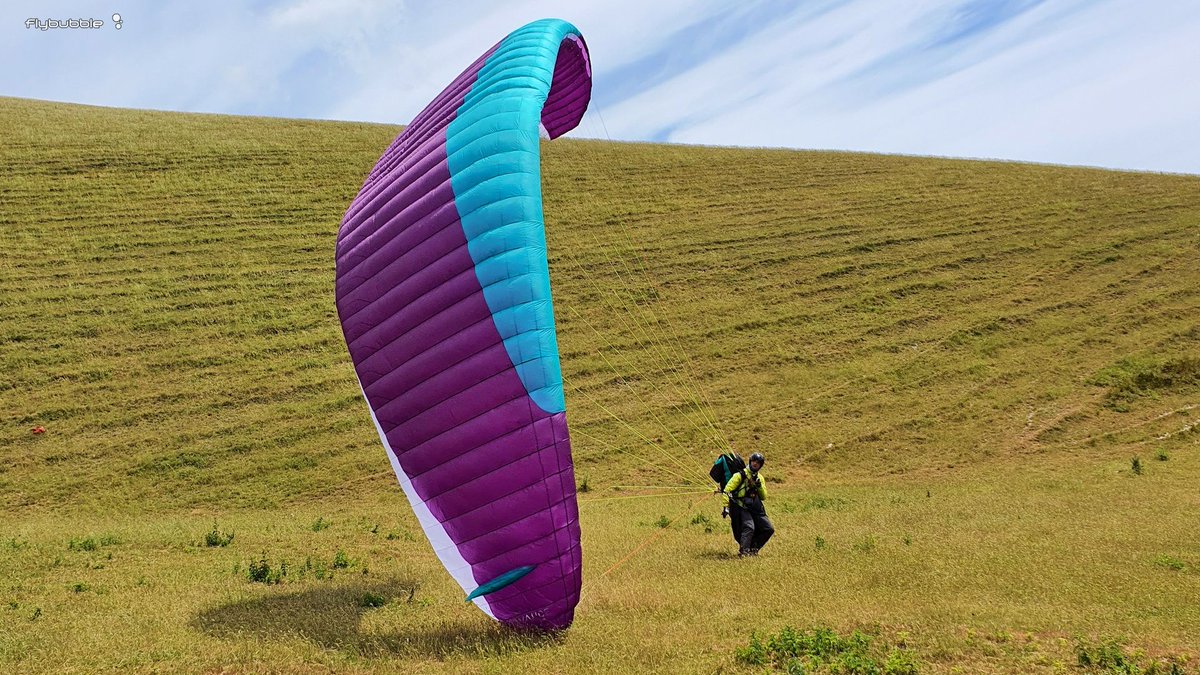
Strong wind and paragliders don't play well together (generally best avoided) but at some point you'll be flying in 'stronger' conditions, and knowing how to handle this can improve your safety. We've put together some paragliding techniques which we've found help us stay safe on our paraglider when the wind picks up.
Firstly, treat strong wind with great respect! Choose what suits your flying skills and equipment, and learn the skills progressively (one step at a time).
Strong wind preparation
If you have access to a beach (or second-best, an open field), it's a great place to lay the foundation of high-wind kiting skills. It's absolutely essential that you have complete control of the wing on the ground, because in strong wind, the most relevant hazard is very close - the rocks at the back of the launch site!
Check out how to manage your wing on windy launches
You should have already mastered all the groundhandling exercises in
Launching in stronger winds
I always try to launch down the slope, away from the worst of the Venturi at the crest of the ridge. It also gives me an easier time to lay out the wing, and the steeper slope prevents dragging, and makes the wing pull further ahead during launch.
The first principle is to run towards the wing as you launch, to help your control
If your wing responds well to this technique, you could also use rear riser control
If you have the skills and a suitable area you could try the Cobra launch
For more tips on launching in strong wind, check out our short video focusing on preparation.
Landing when the wind is strong
The other risky phase of the flight in strong wind will be the landing. Here you will be exposed to the turbulence created by obstacles on the ground, and perhaps a sheer layer if the surface has created a pool of slow-moving air in a protected, recessed, or cool area.
Legs down early! This is tricky if you still need speedbar, but you can get half bar with only one foot, and that's probably enough as you get low. Being on accelerator close to the ground is very risky.
Here's a basic approach to landing in strong wind:
You'll also want to have your killswitch technique fully dialled in.
For another example of a windy landing in wilder conditions, check out Wild Wind (from around 5 minutes in):
Flying when it's breezy
If you're considering flying in strong wind, make sure you're completely comfortable with the concepts of windspeed, airspeed and groundspeed.
The class of wing you fly usually determines your top airspeed, more so than any ballast weight you carry (3kg=1km/h) or your position in the weight range. It certainly helps being well loaded on a wing, but the shape of the aerofoil causes drag, which is worst for the ‘safer' lower-classed wings.
- Every class upgrade gains you (very roughly) 3km/h:
- First wings (EN A) 44 km/h top speed,
- Progression (EN B) 47km/h,
- XC Class (EN B+) 50 km/h
- Sports Class (EN C) 53 km/h
- Performance (EN D) 56 km/h
- Competition (CCC) 62 km/h.
That's in smooth air in summer at about 1000m altitude using full speedbar (pulley to pulley). But this is unavailable when conditions are rough (and you're too scared to accelerate, or you get collapses which will slow you down well below trim speed). When it really matters is just after you launch, and that's when you're too low to accelerate and often in the most turbulent air. What you can rely on is trim speed, which is around 37 km/h (20 mph), or even as low as 30 at low altitudes in cold conditions.

So when I talk about strong wind here, I'm talking about a base wind of 30km/h+.
It's probably not what you'd choose to launch in, but you might have misjudged the strength. Where should you fly? What should you watch out for? Well, we've made a video about that, just for you.
Paragliding in strong wind: Video
Join Flybubble Paragliding as we compete on the 'Mini-dragon' hike and fly race in extreme conditions.
Brought to you by Flybubble
Like what we do? The best way to thank and support us is to buy gear from us and recommend us. You can also subscribe to Flybubble Patreon. Thank you!
